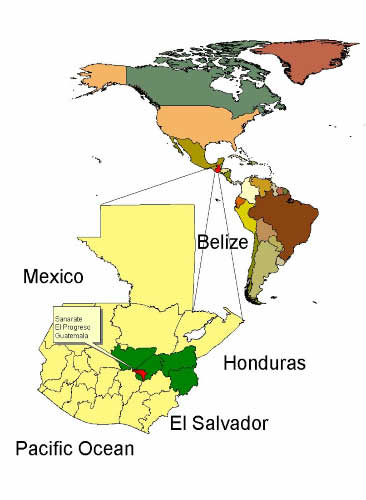

The total area planted with tomatoes in Central America and the Caribbean is around 28,200 ha, divided approximately 50-50% in each region. The area planted to tomatoes in Guatemala is around 5,600 ha. The main type of tomato that is planted in Guatemala is a Saladette type, a pear shape fruit for the fresh market. The average yields are about 30 tons/ha. Whitefly transmitted geminiviruses are considered the main biological constraint to tomato production in Guatemala, and plantations usually show 100% incidence of infection. The months of April to July are hottest and driest and the pressure from whitefly transmitted viruses is the greatest during these months.


Contribution
to the USAID CDR project:
Selection of
tomato lines resistant to whitefly transmitted geminiviruses has been
conducted in Sanarate, eastern Guatemala, since 1998. Several lines have
been selected which show high levels of resistance.
These lines originated from four sources:
1) Hebrew University of Jerusalem, Israel, with resistance from L. hirsutum
2) The Volcani Center, Israel, with resistance from L. peruvianum
3) INRA, France, with resistance from L. pimpinellifolium and L. peruvianum
4) The University of Florida, with resistance from L. chilense.
Several geminiviral resistant lines have been crossed to lines which are susceptible to geminiviruses but which have resistance to other other important pathogens, and which have other desirable agronomic or fruit quality characters. Some of the best hybrids from these crosses will be made available to the MERC group for crossing to lines or hybrids adapted to the conditions of each of the participating countries.
For more information about begomoviruses in Guatemala, please contact Dr. Luis Mejia. E-Mail: sst@concyt.gob.gt